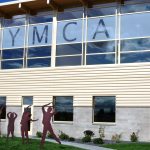Clients ages 50 and over are sometimes treated with “kid gloves”. Training should be prescribed on an individual basis, of course, but barring contraindications, there are many types of exercise that can be beneficial to seniors.
At a time when more people expect to live longer and want to enjoy their longevity than ever before, why use 50 years of age as a starting point? Well, at about age 50, there is an increased rate of lean tissue mass (and a resultant effect on strength and endurance). By age 65, the rate of sarcopenia (a medical term derived from Greek meaning “poverty of the flesh”) picks up even more. This can noticed in frail, elderly people who are sometimes bent over from a combination of sarcopenia and the reduced bone tissue density of osteoporosis. These tendencies can be accelerated by a poor diet and the continuation of a sedentary lifestyle. Fortunately, with proper nutrition and exercise, there is much that can be done to slow and in some instances, counter the effects of natural aging.
First Things First
It is imperative that senior beginners have a physical examination and discuss with their doctor their plan for a fitness weight training program prior to starting one. It is critically important at the outset of trainer-client relationship for the trainer to be aware of any activities or exercises that should for any reason be restricted and this should begin at the initial consultation. As with clients of any age, doing too much too soon or using improper techniques can lead to some serious setbacks.
Resistance Training
The use of machines and free weights are what immediately springs to mind for many people when they think of weight, or resistance, training. Beneficial as those implements can be, they represent the tip of the iceberg when it comes to what’s available. The use of bodyweight exercises, kettlebells, Pilates, resistance bands, sandbags, and various other fitness devices can also provide progressive resistance whether the client is a beginner or an ‘old hand’. And don’t be afraid of the water: For clients who have been medically advised against high-impact exercises, water aerobics (Though classified as a cardiovascular exercise) also involve a good measure of resistance in the form of the aquatic medium. All of these forms of exercise can be used to good effect with senior clients provided the trainer is competent in the respective disciplines and is certified accordingly.
What about Cardio?
Most cardio activities that can be used for younger clients can yield great results with seniors, too. Again, barring contraindications, even ‘high-impact’ activities such as jogging can be used if the client is so inclined. Much of the recent research into high-impact exercise by seniors suggests that in many cases high-impact exercise can be beneficial for those in their middle years and beyond. A 2003 study of people aged 30 to past 70 found that while sedentary adults lost about 10 percent of their maximal endurance capacity for each progressive decade, young and middle-aged people who regularly partook in intense and high-impact exercise showed a much slower decline, with a loss of only about 5 percent of their capacity per decade until about age 70, at which point the loss of capacity accelerated for exercisers and non-exercisers alike.1
Arthritis is more common among seniors, but there is scant evidence to support the widespread notion that high-impact exercise accelerates the onset of the condition. In a study from 2013, adult runners, many of them aged 45 and above, showed a lower incidence rate of knee osteoarthritis and hip replacement than those of the same age who walked. Those in the study who logged the most mileage over the course of the seven year period studied showed the lowest risk. The author of the study speculated that this may because running improved the overall health of joint cartilage and helped keep people lean as they aged.2 Another review of studies about jogging and joints concluded that “long-distance running does not increase the risk of osteoarthritis of the knees and hips for healthy people who have no other counter-indications for this kind of physical activity,” and that it “might even have a protective effect against joint degeneration.”3
Conclusion
So when working with senior clients, be alert during workouts and stay informed of any changes in health status and doctors’ orders, but consider leaving the “kid gloves” at home.
References:
1. http://www.ncbi.nlm.nih.gov/pubmed/12974656
2. http://www.ncbi.nlm.nih.gov/pubmed/23377837
3. http://www.ncbi.nlm.nih.gov/pubmed/16790540
4. The National Federation of Professional Trainers. Personal Trainer Certification Manual. 5th Ed. Lafayette, IN: NFPT, 2008.






